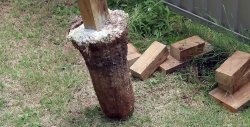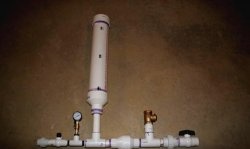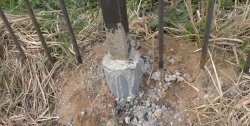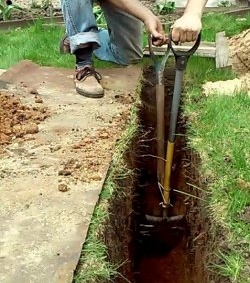DIY trencher made from a brush cutter and a broken grinder
Digging a narrow, shallow trench for laying curbs, laying cables or hoses takes a lot of time and effort. If such work has to be done frequently and in large volumes, then it makes sense to make a gasoline trencher.
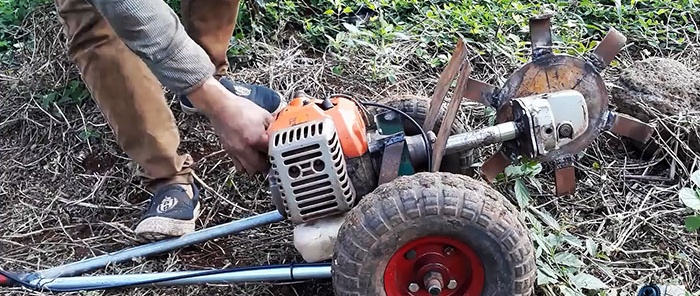
First you need to disassemble the broken angle grinder in order to remove its gearbox.
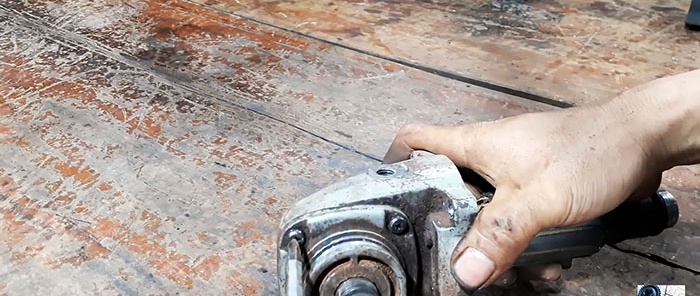
You need to unscrew the anchor from it and cut it in half.
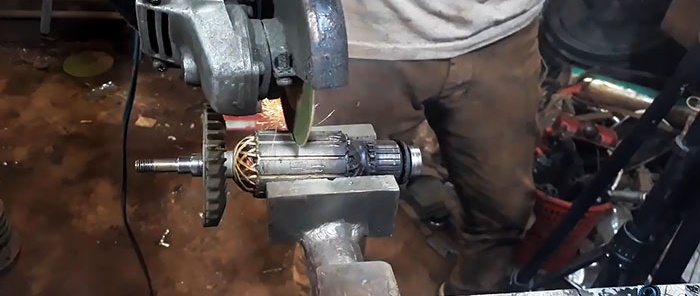
Next, you need to knock out the core with winding from the armature shaft (the halves on the impeller side).
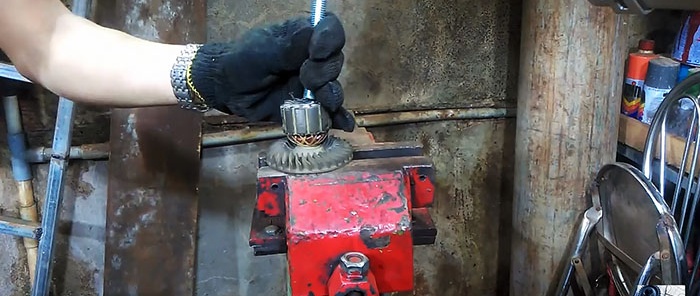
Then you need to remove the bar from the brush cutter, pull out its shaft and cut it, leaving a length of about 20-30 cm. The resulting trim is welded to the armature shaft of the angle grinder.
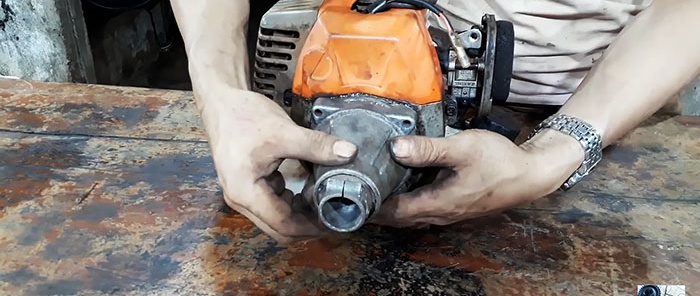
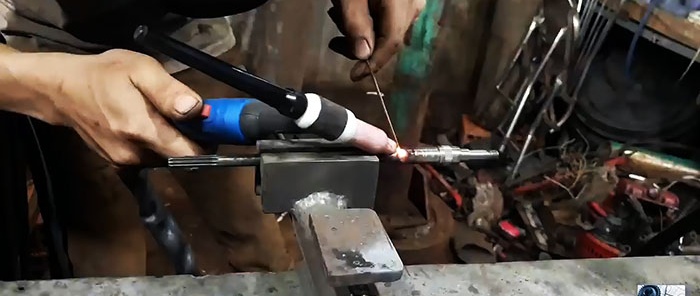
Next, a mounting plate is cut from a steel plate under the grinder gearbox.4 holes are drilled in it along the edges for mounting screws, and one in the center for the shaft.
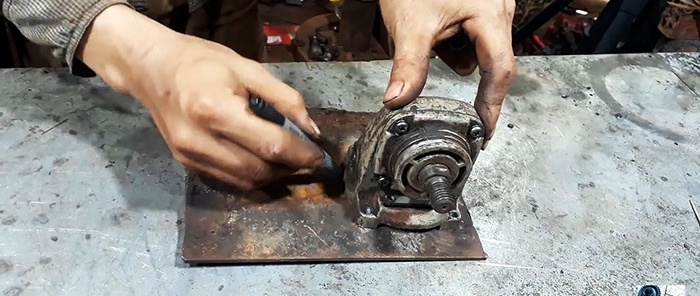
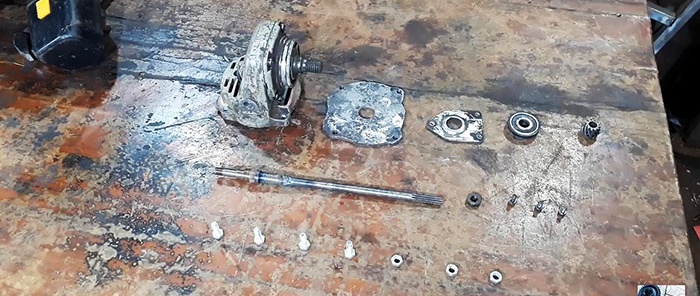
The disassembled gearbox is assembled in the reverse order, but instead of an armature, a welded shaft is inserted into it. Its open part is covered with a cut out plate.

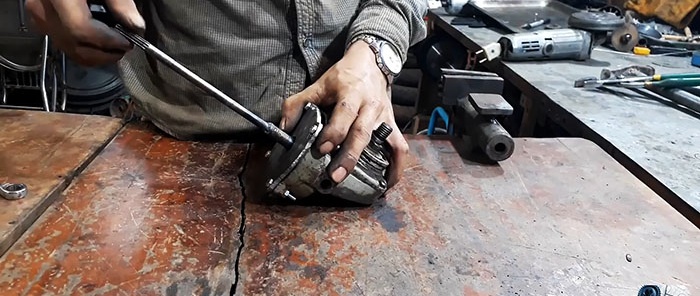
To connect the grinder gearbox and the lawn mower gearbox, you need to use a steel rod instead of an aluminum one. Ideally, its diameter should be similar to the standard tube. As a last resort, it is possible for the steel pipe to fit tightly inside the aluminum rod, which will allow it to be clamped in the upper gearbox of the brush cutter.

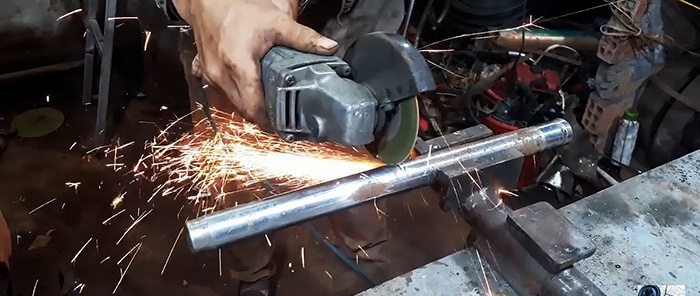
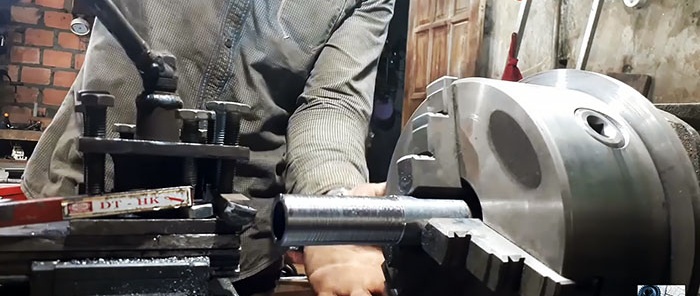
A steel rod is inserted into the upper gearbox of the brush cutter, after which its second end is welded to the plate on the grinder gearbox.
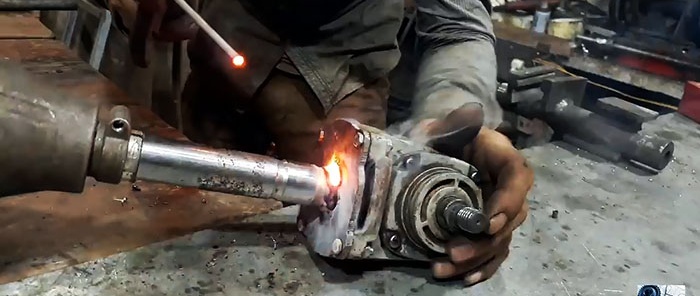
The next step is to make a working knife for digging a trench. To do this, a disk is cut out of a steel plate and L-shaped plates are welded onto it, alternating the direction of bending. A wide hole is made in the center of the disk for installation on the grinder gearbox.
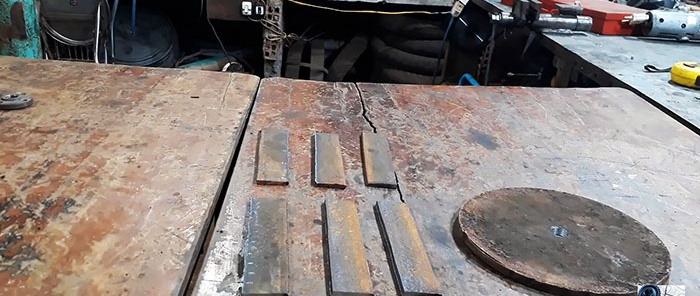
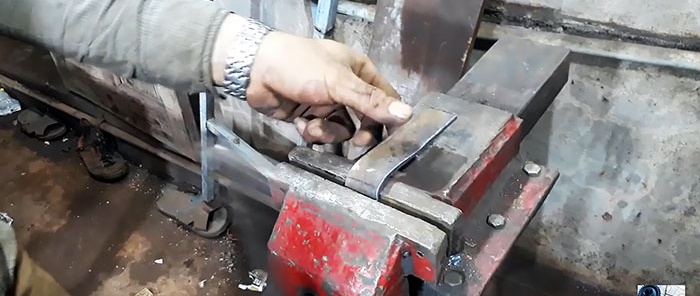
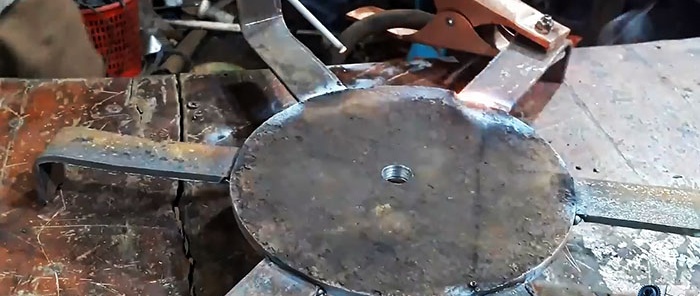
Next, the trencher frame is welded. A frame is made from the corner to mount the motor, an axle is welded to it and wheels are installed. A fork made of two pipes is welded to the mount at a right angle, and a bicycle handlebar is welded to it.
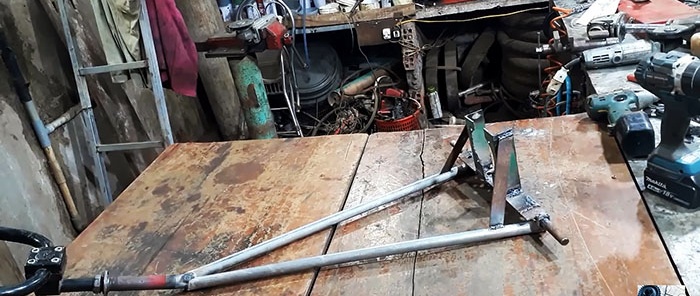
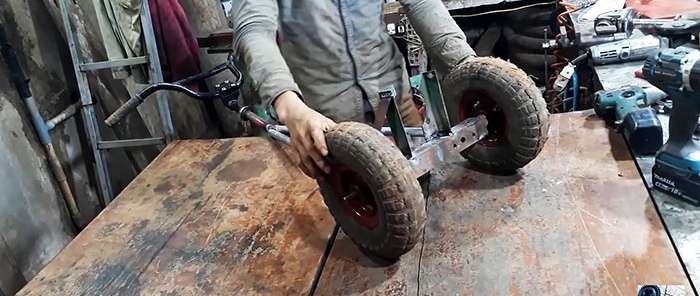
The motor of the brush cutter is screwed to the frame with screws securing the upper gearbox.
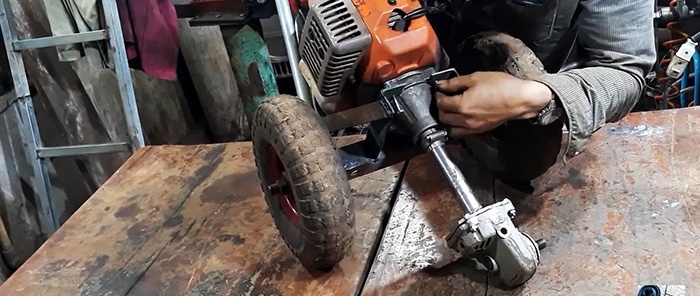

Then the throttle cable is routed to the steering wheel. The end of the cable can be attached to the bicycle brake lever. Also, a thin sheet steel shield is attached to the front of the trencher frame.
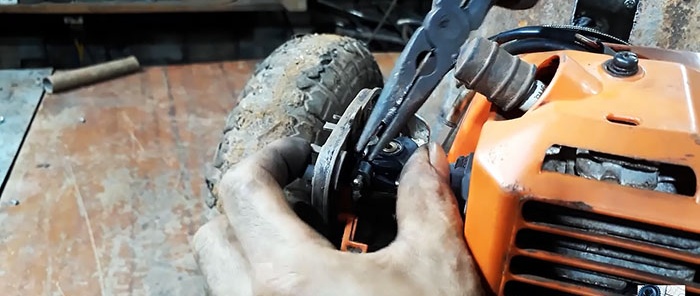
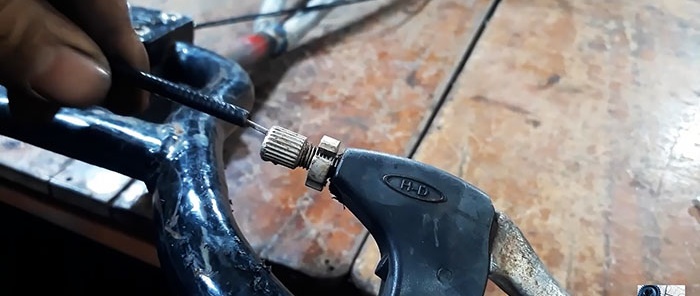
This type of trencher works when moving backwards. It must be pulled slowly towards you, maintaining high engine speeds. The knife will bite into the soil and throw it into the shield, distributing the earth along the sides of the trench.With sufficient engine power of the brush cutter, the productivity of this unit will be many times greater than that of manual digging with a shovel. The resulting trench can be used not only for laying communications, but also, for example, for planting tree seedlings in a nursery.

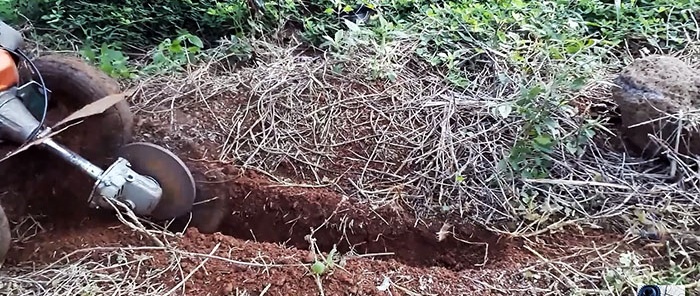
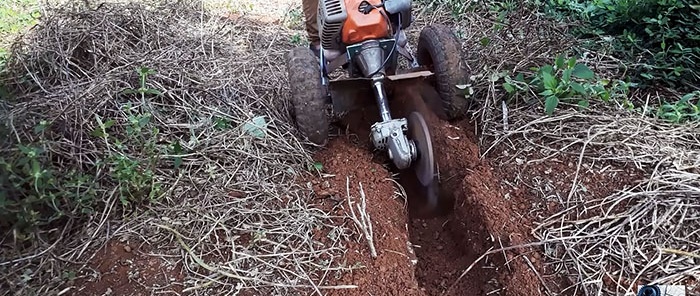

Materials:
- brush cutter;
- Bulgarian;
- steel plate 5 mm or thicker;
- thick-walled steel pipe with an outer diameter equal to the bar of the brush cutter;
- steel strip with a thickness of 4 mm;
- wheels for trolley 2 pcs.;
- bicycle wheel;
- corner 30x30 mm;
- bicycle brake lever;
- Sheet steel.
Making a trencher
First you need to disassemble the broken angle grinder in order to remove its gearbox.

You need to unscrew the anchor from it and cut it in half.

Next, you need to knock out the core with winding from the armature shaft (the halves on the impeller side).

Then you need to remove the bar from the brush cutter, pull out its shaft and cut it, leaving a length of about 20-30 cm. The resulting trim is welded to the armature shaft of the angle grinder.


Next, a mounting plate is cut from a steel plate under the grinder gearbox.4 holes are drilled in it along the edges for mounting screws, and one in the center for the shaft.


The disassembled gearbox is assembled in the reverse order, but instead of an armature, a welded shaft is inserted into it. Its open part is covered with a cut out plate.


To connect the grinder gearbox and the lawn mower gearbox, you need to use a steel rod instead of an aluminum one. Ideally, its diameter should be similar to the standard tube. As a last resort, it is possible for the steel pipe to fit tightly inside the aluminum rod, which will allow it to be clamped in the upper gearbox of the brush cutter.



A steel rod is inserted into the upper gearbox of the brush cutter, after which its second end is welded to the plate on the grinder gearbox.

The next step is to make a working knife for digging a trench. To do this, a disk is cut out of a steel plate and L-shaped plates are welded onto it, alternating the direction of bending. A wide hole is made in the center of the disk for installation on the grinder gearbox.



Next, the trencher frame is welded. A frame is made from the corner to mount the motor, an axle is welded to it and wheels are installed. A fork made of two pipes is welded to the mount at a right angle, and a bicycle handlebar is welded to it.


The motor of the brush cutter is screwed to the frame with screws securing the upper gearbox.


Then the throttle cable is routed to the steering wheel. The end of the cable can be attached to the bicycle brake lever. Also, a thin sheet steel shield is attached to the front of the trencher frame.


This type of trencher works when moving backwards. It must be pulled slowly towards you, maintaining high engine speeds. The knife will bite into the soil and throw it into the shield, distributing the earth along the sides of the trench.With sufficient engine power of the brush cutter, the productivity of this unit will be many times greater than that of manual digging with a shovel. The resulting trench can be used not only for laying communications, but also, for example, for planting tree seedlings in a nursery.



Watch the video
Similar master classes
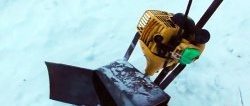
Do-it-yourself snow blower from a brush cutter
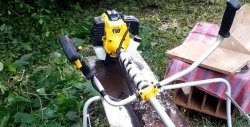
How and with what to lubricate the shafts in the mower bar
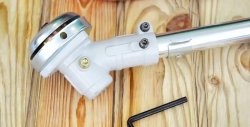
How to lubricate the gearbox of a brush cutter in a simple way
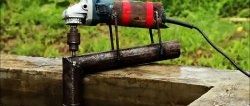
Homemade high-performance pump for pumping water to

Homemade motorized sprayer from a brush cutter
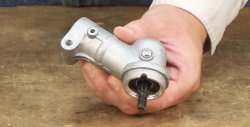
Replacing the lower gearbox of a brush cutter (trimmer)
Particularly interesting
Comments (2)

